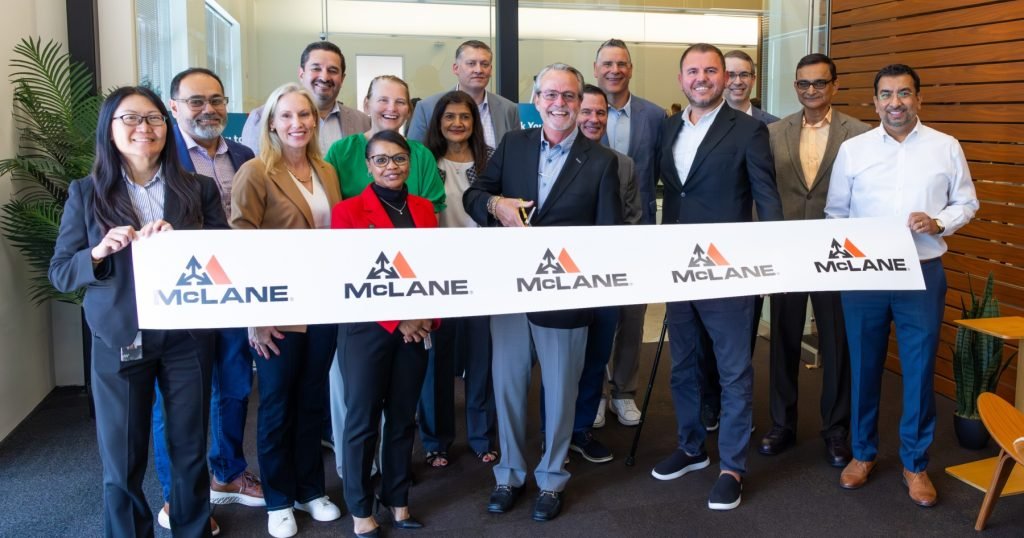Inside McLane’s New Austin Tech Hub: Where Food Logistics Meets Code

By Maria Kalamatas — September 2, 2025
AUSTIN, TEXAS — September 2, 2025. The new McLane tech hub doesn’t look like a traditional logistics site. No trucks outside, no pallets waiting for pickup. Instead, you walk into an open space filled with long tables, laptops, and walls covered in freight maps glowing with live data.
McLane, one of the biggest names in food distribution in the U.S., chose Austin for its first technology center dedicated to logistics innovation. The idea is simple on paper: take a century-old trucking and warehousing giant and give it the tools of a tech startup.
“We’re a food company, sure, but at this scale you’re really a data company,” explained Chris Smith, McLane’s VP of Technology, gesturing at a screen where red and blue lines traced delivery routes in real time. “Every wrong turn, every idle truck, every late forecast costs money and hurts customers. That’s what this place is here to fix.”
Why Austin?
The city has become a magnet for tech talent. Engineers who once built apps for ride-hailing or fintech are now being lured into logistics. McLane wanted to be close to that talent pool — and to the universities feeding it.
A small team here is working on AI models to predict demand neighborhood by neighborhood, while another is coding tools that simulate entire warehouse operations in 3D. On one desk sits a prototype dashboard that flashes alerts when too many trucks are running empty miles.
A cultural shift
For McLane, which has long been known for fleets of trucks delivering to Walmarts and convenience stores, this is a cultural pivot. Instead of measuring success by how many miles a driver covers, managers are now watching how many miles they can save.
“It’s strange for some of the old hands,” admitted a project engineer who joined from the Dallas operations team. “We used to talk about loading bays and schedules. Now we talk about algorithms and APIs. But in the end, it’s still about moving food on time.”
Bigger picture
Food logistics has been slow to adopt cutting-edge tech compared to parcel or express carriers. But demand for faster, fresher, and more traceable deliveries is pushing even conservative players to change. McLane’s Austin hub is part of a wave of modernization that could reshape the industry over the next decade.
Outlook
Only about 150 people work here today, but the plan is to double headcount within two years. For now, it feels more like a startup than a Fortune 500 operation. But if the algorithms being tested here take root, they may quietly change how meals, groceries, and restaurant supplies travel across the U.S.
The post Inside McLane’s New Austin Tech Hub: Where Food Logistics Meets Code appeared first on The Logistic News.
Share this post
Related
Posts
MEXICO – Truckers’ roadblocks disrupt North American flows
Since dawn, several Mexican highways have looked more like improvised parking lots than logistical corridors. Groups of drivers block entire...
China Cargo Airlines launches new Paris–Shanghai freight service
China Cargo Airlines inaugurates a direct Paris–Shanghai freight flight, complemented by feeder road connections across Western Europe. This corridor meets...
Hudong-Zhonghua de Chine établit un nouveau record pour les livraisons de méthaniers
Chinese shipbuilder Hudong-Zhonghua Shipbuilding today delivered its ninth LNG carrier of the year, marking a new record for a single...
Onboard cameras: technology alone is insufficient in the absence of a true policy
The problem of cameras mounted on trucks was discussed at the Trimble Insight 2025 trade exhibition mainly from the aspect...




